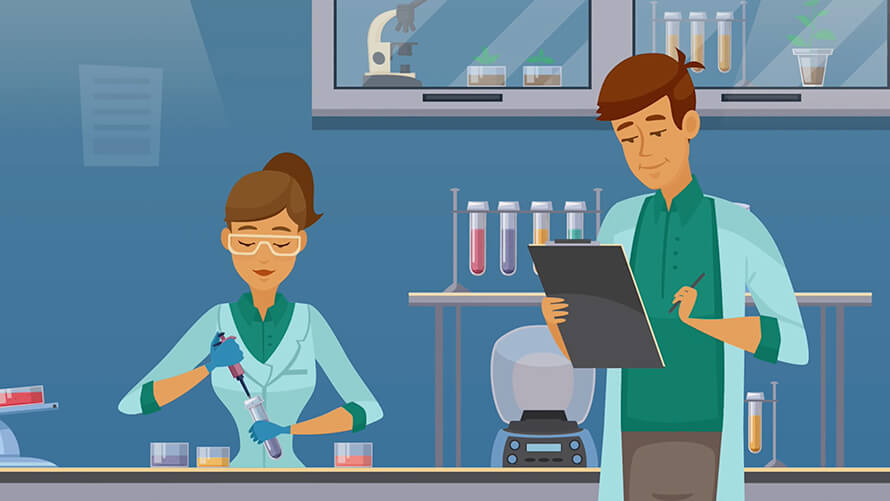What's in your CBD?
If it’s not FDA approved, how do you know what’s in your CBD product?

Watch this video to see what to look for when choosing a CBD product
What’s really in the bottle?
CBD is one of the major cannabinoid compounds found in cannabis and hemp plants. When CBD is purified and other cannabinoids, such as THC (tetrahydrocannabinol), are removed, it lacks the “high” associated with marijuana.
Just because a product is for sale doesn’t mean it’s been tested and regulated for quality control, safety, or label accuracy. So, you may never know the correct amount for the desired therapeutic effect—or how to avoid the undesired adverse effects that can come from taking too much.
So, what’s really in these non–FDA approved CBD products?
A study published in the Journal of the American Medical Association evaluated non–FDA approved CBD products and found that:
-
Almost
70%of the products studied did not
contain the amount of CBD
stated on the package -
26%
contained less CBD
than claimed on the label -
42%
contained more CBD
than claimed on the label -
20%
included detectable levels of THC that
could cause intoxication, especially
among children
Enter, the Clean Label Project
The Clean Label Project is a national, independent, non-profit organization dedicated to bringing truth and transparency to product labeling. They investigated 242 non–FDA approved CBD products—everything from tinctures and topical creams, to capsules and gummies—and tested for heavy metals, pesticides, plasticizers,* THC, and actual CBD content.
Let’s take a look below at what the Clean Label Project found and compare it to the only FDA-approved CBD product.

*Plasticizers, also known as phthalates, are industrial chemicals that are added to plastics to make them more flexible and durable.
FDA regulations require strict label accuracy
NON-FDA APPROVED
MISLABELED CBD PRODUCTS
Over 30% of non–FDA approved products mislabeled CBD levels by +/- 20%—that means it can be difficult to know if you’re getting the correct amount when using or switching between different products
NO CBD CONTENT
10 products that claimed to be CBD contained no traces of CBD at all—that means your product may not contain what’s on the label
Potentially Very High Levels of CBD
One product had 700% of the CBD declared on the label—that means you could experience negative side effects from taking way too much CBD without even knowing it
FDA APPROVED
AN ACCURATE CBD LABEL
Each bottle of FDA-approved CBD is regulated to have the amount of CBD listed on the label and have the same amount of CBD in every bottle—that means there’s consistency from bottle to bottle and batch to batch
You don't know how much THC you're getting
NON-FDA APPROVED
FDA APPROVED
NON-FDA APPROVED
THC IN YOUR CBD
45% of non–FDA approved CBD products tested had measurable levels of THC—that means you could get the “high” sensation from something that claims you won’t or experience side effects associated with THC
The difference FDA approval makesFDA APPROVED
FDA APPROVED MEANS PRODUCT QUALITY
FDA-approved CBD products’ growing and manufacturing process adheres to strict standards so that every bottle contains highly purified CBD and contains exactly what it says on the label
See where CBD comes fromFederal oversight means safety tests
NON-FDA APPROVED
LEAD IN CBD
The water in the Flint Michigan water crisis was contaminated with an average of 23 parts per billion (ppb) of lead. The top 10 CBD products tested had a greater average of lead content at 34 ppb. Government intervention occurs when lead levels in drinking water exceed 15 ppb because it can be dangerous and toxic to the body
PESTICIDES IN CBD
Hazardous chemicals were found, including pesticides—that means a potential risk of cancer and both long- and short-term negative health effects
PLASTIC IN CBD
3x more plasticizers compared to the average amount were found in most consumer products—that means a potential cancer-causing substance is being added
FDA APPROVED
SAFETY-TESTED CBD
Strict manufacturing and quality control requirements ensure an FDA-approved CBD product is free from pesticides, pollutants, toxins, and metals like lead—that means you can feel confident that it is contaminant-free no matter where you live because regulations are on a federal level as opposed to state by state
See which companies the FDA has sent warning letters to about selling unsafe CBDFDA-approved CBD
is eligible for insurance coverage
NON-FDA APPROVED
FDA APPROVED
NON-FDA APPROVED
NOT TYPICALLY COVERED
Non–FDA approved CBD products have not been recognized as effective or safe by a regulatory agency and insurance companies typically do not cover them
What to look for when choosing a CBD productFDA APPROVED
ELIGIBLE FOR COVERAGE
Due to federal oversight and regulation and approval, FDA-approved CBD is eligible for insurance coverage
After seeing the difference between non–FDA approved and FDA-approved CBD, watch this video to learn what to look for when choosing a CBD product









